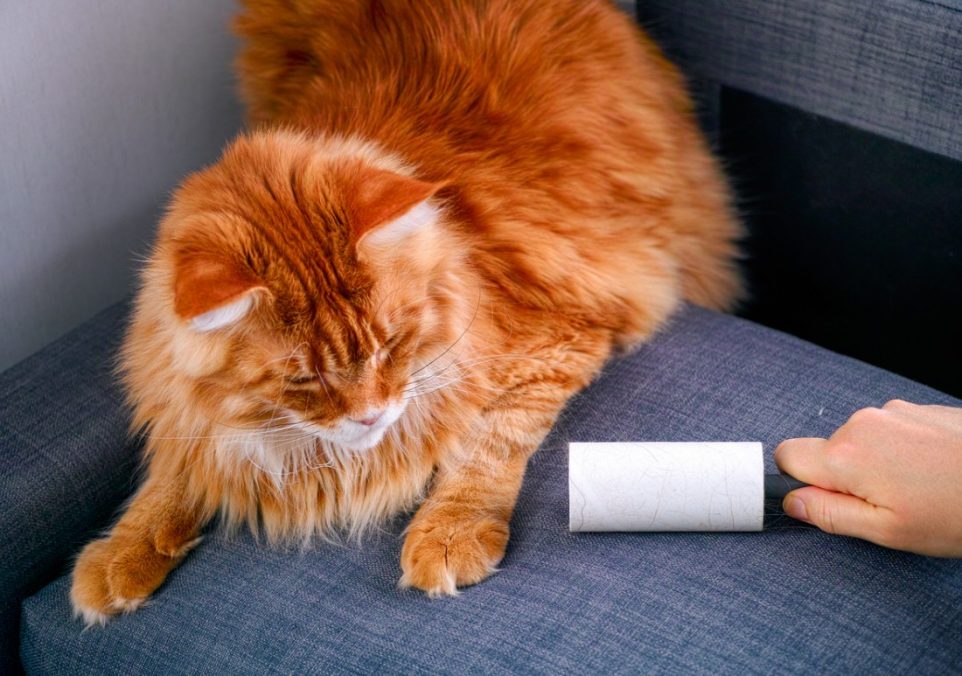Cat Hair vs Fur: What is the Difference?

Attention all cat lovers and pet parents! If you’ve ever felt baffled by the terms “cat hair” and “cat fur,” fret not because we’re here to unravel the mystery for you. We all know that our feline friends grace us with their majestic coats, but have you ever wondered what sets their hair apart from their fur? Join us on this journey as we delve into the fascinating world of cat grooming and explore the differences between cat hair and fur.
Understanding Cat Hair
Cat hair is primarily composed of a protein called keratin, which gives it strength and elasticity. It consists of a shaft, cuticle, cortex, and medulla. The shaft is the visible part of the hair, while the cuticle is the outermost layer that protects the hair’s inner structure. The cortex provides the hair’s color, and the medulla is the central core.
Cat hair goes through a growth cycle that consists of three phases: anagen, catagen, and telogen. During the anagen phase, the hair grows actively, while in the catagen phase, growth slows down. Finally, in the telogen phase, the hair rests before shedding and being subsequently replaced by new hair. Different factors, such as breed and environmental conditions, can influence the duration of each phase and the shedding patterns.
Understanding Cat Fur
Fur is a term used to describe the dense coat of hair that covers an animal’s body. It is typically thicker and coarser than cat hair, providing better protection against harsh weather conditions.
There are two main types of cat fur: guard hair and undercoat. Guard hair is longer, coarser, and serves as the outer layer, while the undercoat is softer, denser, and provides insulation. The amount and texture of these layers vary between cat breeds.
Dealing with Cat Hair
Regular grooming is crucial to maintain a cat’s hair health and minimize shedding. Brushing helps remove loose hair, prevents matting, and stimulates blood flow to the skin. Additionally, grooming sessions allow you to inspect your cat’s skin for abnormalities.
Cat hair, specifically the allergenic proteins present in saliva and dander, can trigger allergies in susceptible individuals. Minimizing allergens involves keeping your home clean, using air purifiers, washing bedding regularly, and maintaining a strict grooming routine to reduce the amount of loose hair in the environment.
You can control the amount of cat hair in your home’s environment by using lint rollers, frequently vacuuming, covering furniture with washable blankets or slipcovers, and designating cat-free zones to minimize hair accumulation.
Managing Cat Fur
Maintaining healthy cat fur involves a combination of proper nutrition, regular grooming, and monitoring for any signs of coat problems. Providing a balanced diet rich in essential nutrients helps promote healthy hair growth and maintain a glossy coat.
Regular brushing helps prevent matting and tangles in a cat’s fur. Using a wide-toothed comb or a slicker cat brush for longer-haired cats can gently detangle and remove any knots. In severe cases, it may be necessary to consult a professional groomer to address extensive matting.
If a cat’s fur sheds excessively or exhibits unusual conditions like excessive oiliness, dryness, or brittleness, it’s best to consult a veterinarian. They can assess your cat’s overall health and provide recommendations or treatments to address any underlying issues.
Cat Hair and Fur in Different Breeds
Different cat breeds have distinct hair and fur characteristics. Some breeds have long, luxurious hair, while others have short, dense fur. These variations impact grooming requirements and shedding patterns.
Grooming techniques and frequency vary among cat breeds. Long-haired breeds require more frequent brushing to prevent matting, while short-haired breeds benefit from regular grooming to remove loose hair and minimize shedding.
Certain cat breeds are well-known for their unique hair and fur traits. For example, the Sphynx breed lacks hair altogether, while the Maine Coon breed has a thick, water-resistant double coat. Understanding these traits helps in providing appropriate care for specific cat breeds.
Cat Hair and Fur Maintenance Tips
When brushing a cat’s hair, start from the head and work your way down to the tail. Use gentle strokes and be mindful of any tangles or matting. Tailor the brushing technique to the cat’s specific coat type, utilizing the appropriate cat brushes or combs.
The right grooming tools are essential to meet a cat’s specific needs. Long-haired cats may benefit from a slicker brush or a wide-toothed comb, while short-haired cats may require a grooming glove or a rubber cat brush to remove loose hair effectively.
Professional grooming assistance may be necessary in some cases, especially for cats with extensive matting, behavioral issues, or medical conditions. Professional groomers have the expertise and tools to handle challenging grooming situations and ensure the cat’s well-being.
Final Note
Understanding the difference between cat hair and fur is essential for cat owners to provide optimal care. Regular grooming, addressing shedding patterns, and awareness of potential underlying issues contribute to a healthy coat and a happy feline companion. Cat hair and fur are not merely synonymous terms. They have unique characteristics and serve different functions in a cat’s overall well-being.
By embracing the differences between cat hair and fur, cat owners can take the necessary steps to provide optimal care for their beloved feline companions. With an adequate understanding, proper grooming, and shedding management, cat hair tumbleweeds can become a thing of the past, and your pet can enjoy a healthy and lustrous coat.
Your Pet’s Best Interest, Always
At Pet Institute, we take pet care seriously. We're dedicated to transparency, impartiality, and the well-being of your pets in every article, review, and recommendation we provide. Our unwavering commitment to these principles ensures that you, our valued reader, always receive reliable and unbiased information. Let us be your trusted guide in the world of pet care and companionship.